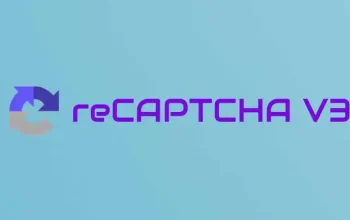“Backtracking is basically the backbone of solving regular data structure problems and algorithms.”
A person unfamiliar with backtracking will never be able to solve many different problems related to data structures such as, n queens “in time” without successfully performing a mathematical stunt, but those who know backtracking will not fight much.
Now you might be getting a general understanding of how important it is for the programmers and coders to learn the aspects of Backtracking for landing jobs as Software Developers.
In this blog, read the real time applications and uses of Backtracking.
Also, practice a few backtracking questions so that you can decide for yourself on how important it is for you to learn backtracking to ace your coding interviews.
What is Backtracking in Data Structures?
A backtracking is a technique that solves a problem by exploring possible solutions to its sub-problem.
For example, if you are trying to solve a math problem, you could try different numbers to see what the answer is. If you find the answer, then you can stop backtracking.
If you find that the answer is not there, then you can backtrack further and try other numbers. Backtracking is a helpful technique because it helps you find solutions that may not have been found otherwise.
Now the question is where do we apply the concept of Backtracking in real time? We may have been using this technique in numerous every day tasks without having a clue altogether!
Also Read: Transform Your HR Practices With Integrated HR Solutions
In reference to that, let’s have a look at the different everyday tasks where we extensively use backtracking.
How Does Learning Backtracking Help in Cracking Coding Interviews?
Backtracking is a form of an algorithmic technique whose purpose is to find all solutions to a problem using brute force. It’s about gradually putting together a set of all possible solutions.
Problems have limits, so in the backtracking algorithm, the solutions that don’t meet the limits are removed completely.
With reference to cracking the coding interviews, if you are able to demonstrate efficient backtracking skills, then it would certainly open the gateway for you to land your dream job.
Have a look at some of the real time uses of the Backtracking Algorithm.
Solving Decision Based Problems
Backtracking is a technique used to solve decision problems. This technique is used when there are many possible solutions to a problem, and the decision maker has to choose one of them.
In which case, the decision maker goes back and redoes the problem with a different solution. This is helpful because it allows the decision maker to find the best solution.
Solving Optimisation Problems
Backtracking algorithms were also discovered to be very effective for solving optimization problems.
They are a type of algorithm that is used when you can’t find an optimal solution to a problem. They are also used when there is not enough information to make an optimal decision.
The backtracking algorithm starts with an initial decision, then iterates through all possible outcomes of that decision. The algorithm then selects the best outcome and starts from the beginning.
Solving Enumeration Problems
In the context of computer science, enumeration refers to listing all the elements within a given set of data.
The Backtracking algorithms were also discovered to be very effective for solving enumeration problems.
The algorithm would start by considering each possible value of n, and then would proceed through each room, comparing it to each value of n. When it reaches a room that is not yet considered, it would backtrack and consider the value of n-1.
Solving Puzzles and Problem that Do Not Have a Time Limit
Backtracking is a technique that is used in problem solving and for solving puzzles. It is a process of going back to the beginning of the problem or puzzle and trying again with a different approach.
The Backtracking Algorithm is also used for solving problems that do not have a time limit.
Finally we have reached the end of listing all the possible problem solving aspects that can be performed using the Backtracking Algorithm.
Moving on, we will discuss the usage of Backtracking Algorithms and where you can apply them in different computational and arithmetic problems.
How to Solve Backtracking Problems?
From permutation to word search problems, the backtracking algorithm can be applied in multiple areas of computer science.
Here are a few concepts which you can solve by applying the Backtracking Algorithm.
Permutation Problems
Permutations are a type of problem in which you have to figure out the order of a list of things. For example, let’s say you want to know the order of the letters in your name.
- You would need to use a backtracking algorithm to solve this problem. The algorithm would start by asking you to list all the letters of your name in order.
- Then, it would ask you to list all the letters in your name without the first letter.
- Next, it would ask you to list all the letters in your name without the last letter.
- It would continue asking you to list the letters without this letter and so on until it has reached all of the letters in your name.
Word Search Problems
Word search puzzles can be quite challenging, but there is a way to make them easier. With the backtracking algorithm you can solve word search puzzles by trying every possible word in a row and then moving backwards until you find the solution.
This algorithm helps to save time and makes it easier to find the answer. The backtracking algorithm can also be used for other types of puzzles, such as crossword puzzles and sudoku puzzles.
Wrapping Up
From solving permutations to completing word wraps and puzzles, backtracking is an extremely efficient programming concept that can help in resolving problems that require you to trace the whole data in absolutely no time!
On that note, if you are planning on appearing for a coding interview, make sure to solve N queens, Warnsdorff’s and graphs interview questions by applying the backtracking algorithm.
Also Read: The Human Resources Dashboard and It’s Important KPIS




